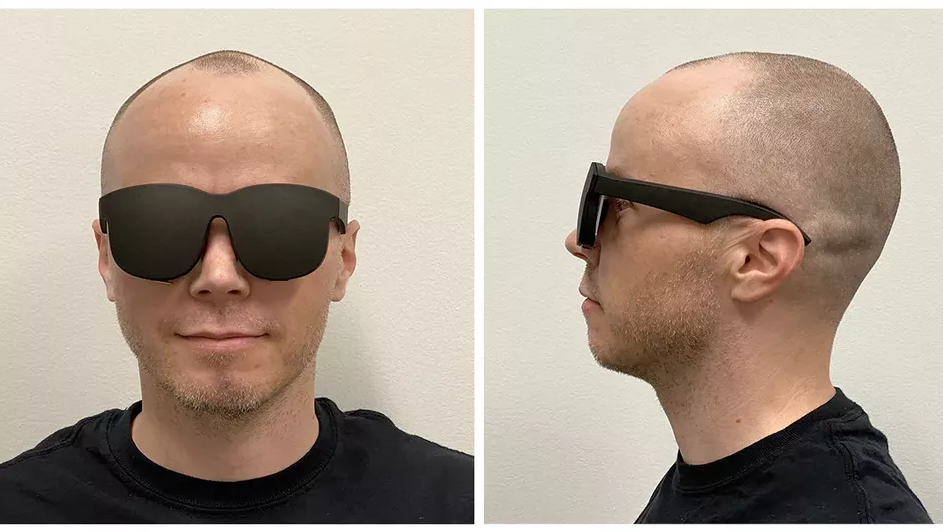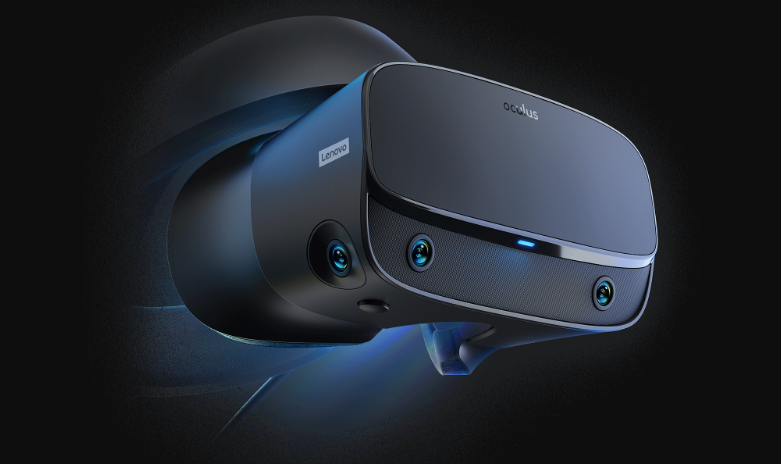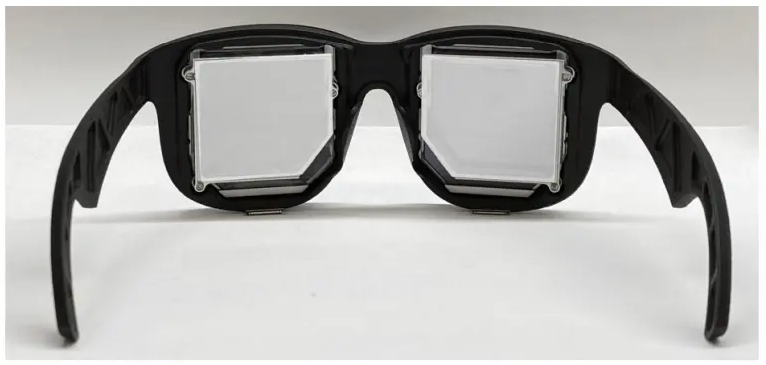New Facebook Prototype Reveal Thinnest VR Headset Yet
VR specifications have been getting better by the day but the form factor is still wanting. Virtual reality headsets remain bulky. While there have been several attempts to slim down VR hardware, the mainstream consumer products are still largely clunky and cumbersome.
Facebook’s virtual reality research division has now presented a sunglasses-like VR prototype headset with a display which measures just 8.9mm thick. This is as thick as a smartphone. The new glasses, which feature a “holographic near-eye display” will be presented at the annual SIGGRAPH computer graphics conference this August.

Facebook Reality Labs’ researchers Junren Wang and Andrew Maimone proposed the new design in research paper titled “Holographic Optics for Thin and Lightweight Virtual Reality”. In the paper, the researchers are proposing a virtual reality headset design where the refractive lens is replaced with holographic optics and with a polarization-based optical folding. This design enables a more compact and lighter weight headset that almost looks like some thick retro sunglasses (as seen above).
The two techniques proposed in the design result in very thin optics and also makes more optimal use of space, according to the Facebook Research blog post. In the post, Facebook Research states that it expects the lighter weight and more comfortable form factors in the proposed design to result in extended virtual reality sessions as well as newer use-cases along with productivity.
A New Optical Architecture
The conventional virtual reality headset design has had to be larger and thicker in order to accommodate the thick and curved lens that shifts the angle of light from the display before it gets to the eye. This is why objects in virtual reality normally appear as being farther away than they really are. The future drive towards slimmer headsets will have to resolve this optical design problem.

In the new proof-of-concept headset, Facebook has replaced this larger lens with holographic optics. They resemble transparent stickers but they offer the same function as the larger lens used in the current virtual reality headsets like the Rift S above. The design has dramatically reduced the thickness and weight of the prototype headset.
The very slim design in Facebook’s proof-of-concept VR headset isn’t just due to holographic optics. Virtual reality headset design usually requires considerable distance between the lens and the display to allow for the proper focusing of the image. To minimize this gap, the Facebook researchers made use of polarization-based optical folding. This is usually referred to as “pancake” folding.

The “pancake” folding mechanism works by bouncing the light back and forth inside the lens a few times before the light reaches the wearer’s eye. This technique increases the distance that light travels between the display and the lens while keeping small actual physical distances. Because the Facebook prototype gets rid of the bulky lens, the pancake folding is done by its holographic optics.
In the paper, the researchers state that they want to pursue the approach of designing a pancake optic in which all the focusing power will be done by the holographic optical elements instead of bulk optics. The research paper is to be presented at the virtual SIGGRAPH conference slated for next month.
The thin virtual reality headset presents an exciting prospect but the project is still only in the research phase. The headset still has many issues that need to resolved and it will be years before it hits the shelves and reaches consumers.
The headset, for example, relies on external components like display drivers and light sources which will have to be packed into its small frame. Besides, the prototype shown has only been designed for Matrix-style shades of green to allow for simplicity in rendering. However, Facebook researchers are hoping to eventually use laser light sources to cater for a broader range of colors than the standard RGB displays.
For the virtual reality industry, the slimmer prototype is an exciting step into the future. Slimmer and lighter headsets will be more practical and may lead to the widespread adoption of VR technology by the mainstream market.
Future VR headsets will need to be more lightweight, of high resolution and with sunglasses-like displays to allow for the next-generation demanding VR applications that can be experienced anywhere and for longer periods of time, the paper noted.
Facebook isn’t the first VR hardware manufacturer to feature slimmer VR headsets with the “pancake lenses”. Both Panasonic and Pico have come up with slimmer hardware prototypes of compact headsets and Huawei has similarly launched a more compact headset in China. Those headsets have weighed about 150 grams without the battery and the tracking system. The current Oculus weighs 571 grams with the mobile chip, battery and lens separation adjustment included.
https://virtualrealitytimes.com/2020/07/01/new-facebook-prototype-reveal-thinnest-vr-headset-yet/https://virtualrealitytimes.com/wp-content/uploads/2020/07/Facebook-VR-Headset-Prototype-600x338.pnghttps://virtualrealitytimes.com/wp-content/uploads/2020/07/Facebook-VR-Headset-Prototype-150x90.pngInventionsTechnologyVR specifications have been getting better by the day but the form factor is still wanting. Virtual reality headsets remain bulky. While there have been several attempts to slim down VR hardware, the mainstream consumer products are still largely clunky and cumbersome. Facebook’s virtual reality research division has now presented...Sam OchanjiSam Ochanji[email protected]EditorVirtual Reality Times - Metaverse & VR
